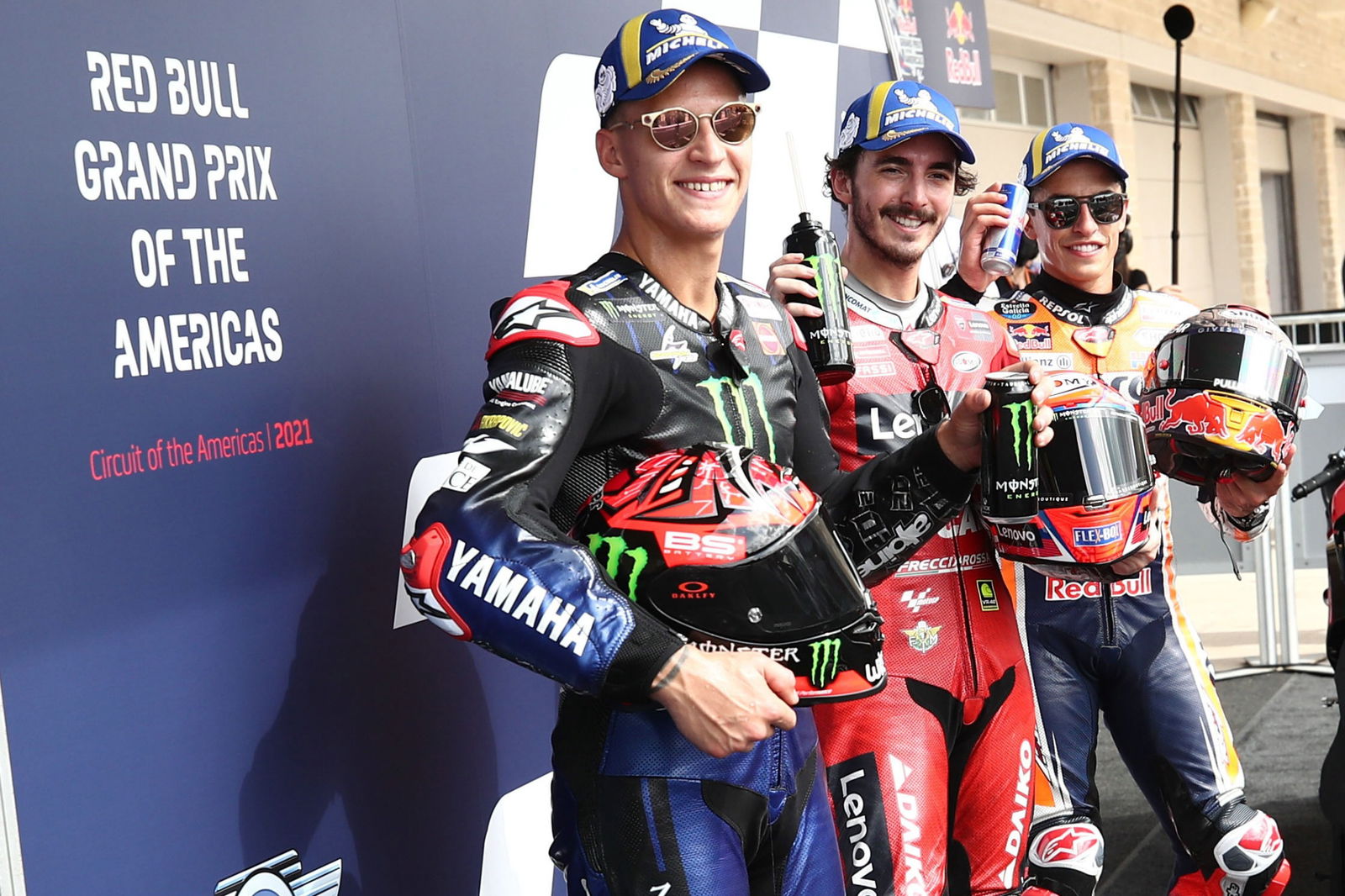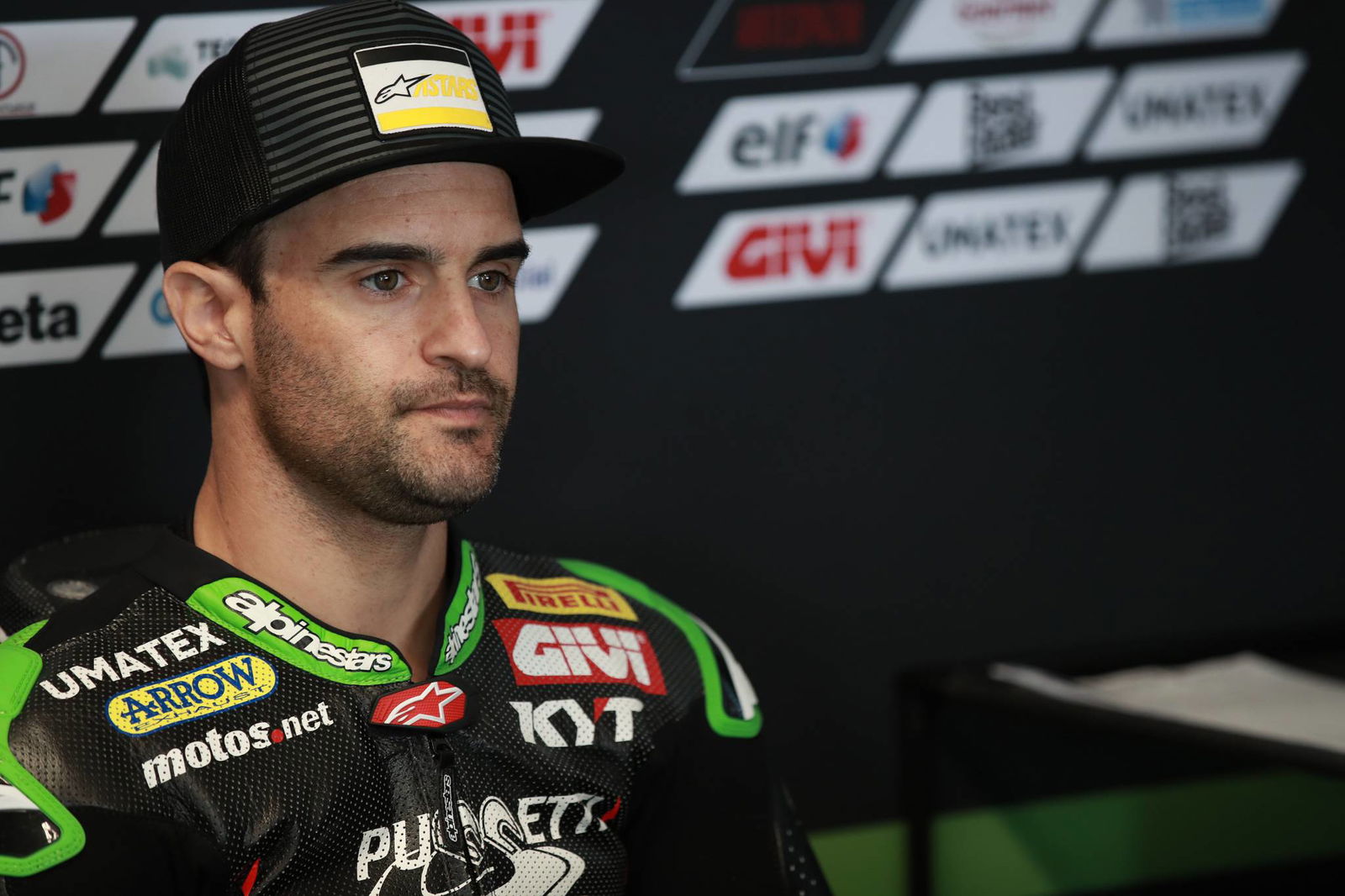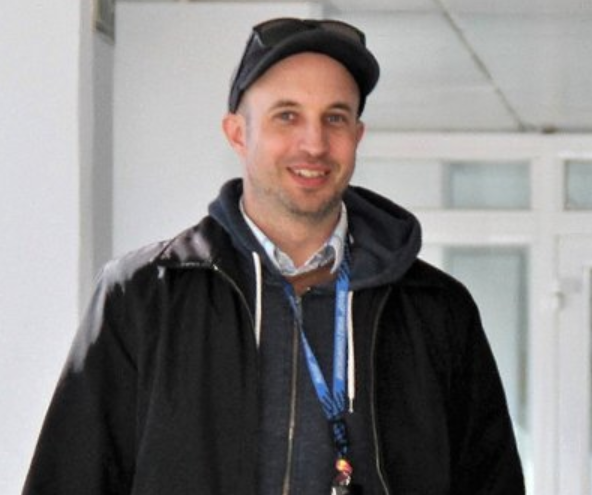PICTURES: 2022 MotoGP holeshot devices - how low can you go?
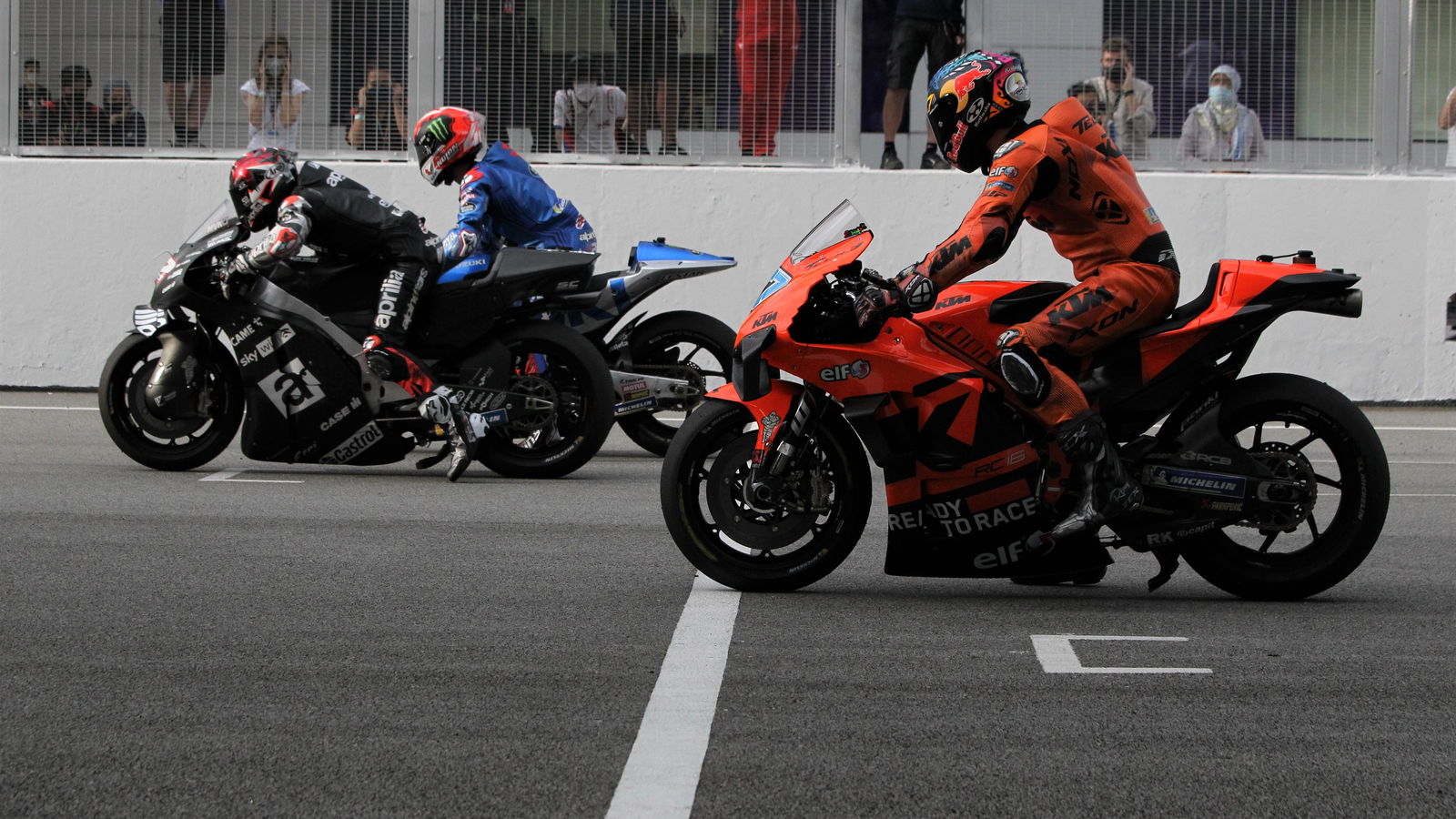
One week from today (Sunday), the 2022 MotoGP riders will be lining up on the grid for the Qatar season opener.
And unlike last year, all of them will be equipped with both front and rear holeshot devices, lowering the bike to allow for greater acceleration before the front wheel starts to lift.
Excessive wheelies (not rear grip) are the 'weak point' for a dry MotoGP start since, when the front wheel rises too high, engine power has to be reduced (by the electronics) to remain in control.
With MotoGP bikes and riders closer than ever, race starts have become even more important and special time was set aside for practice starts during each day of pre-season testing.
Although 'holeshot devices' (used only for the race start) and repeatable 'ride-height devices ' (used as needed by the rider via a handlebar switch, usually during slow corners that lead onto a long straight) share the same technology, the switches used to deploy them are often different.
That's why riders can be seen taking their hands off the handlebars to turn a switch on the triple clamps to engage the holeshot device(s).
It may seem like an unnecessary duplication, to have multiple switches, but the bikes sit noticeably lower when the 'holeshot' device is activated for the start compared to when the 'ride height' system is used on corner exit.
The difference makes sense in that wheelies are much more critical from a standing start, meaning every millimetre the centre of gravity can be lowered makes a bigger an impact, while allowing some extra suspension travel on corner exit means any bumps or jolts (for example from the kerbs) can still be soaked up when using the 'ride height' system.
All teams and riders not only have access to front and rear holeshot devices, but some form of rear ride-height system - either 'manual', meaning the rear lowers as soon as the rider triggers the device, or 'automatic', when the rider activates on the way into a corner and the bike lowers by itself on the exit.
However, Ducati is the only factory so far known to have a ride-height system that can now lower both the rear and front on corner exit for 2022.
Here is a selection of Hazrin's holeshot device pictures, taken during end-of-day practice starts at Sepang earlier this month:
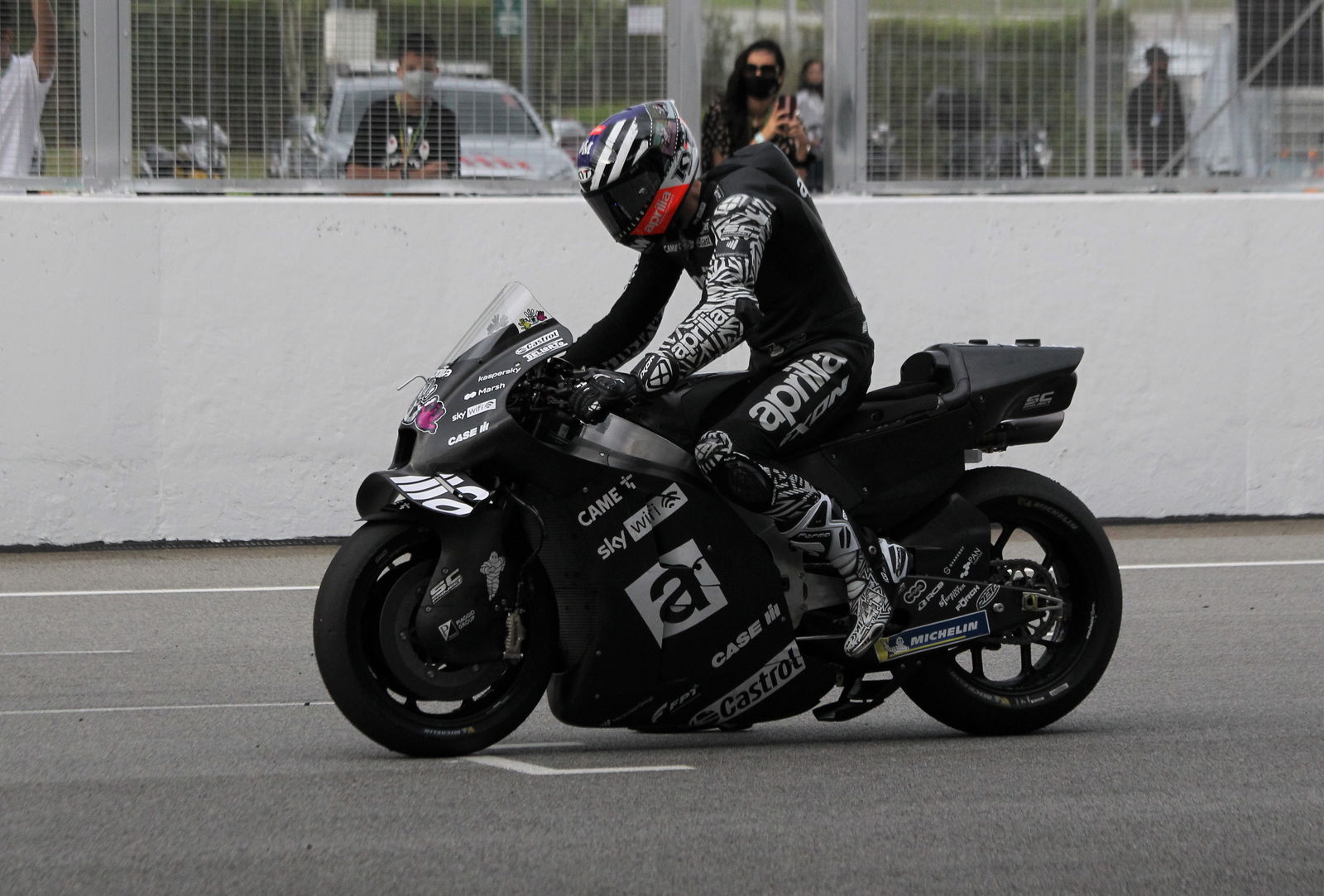
Aleix Espargaro, Aprilia.
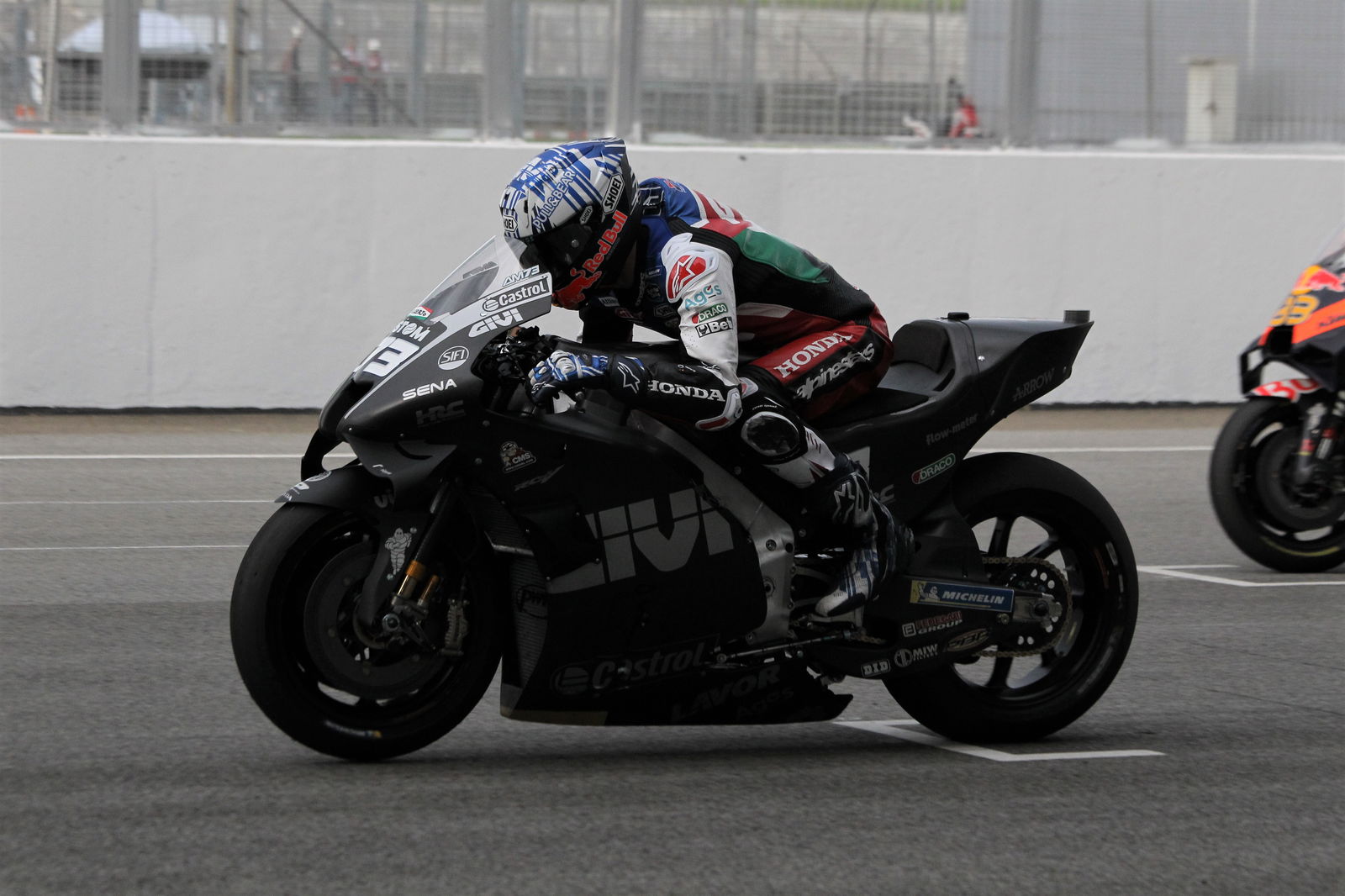
Alex Marquez, LCR Honda.
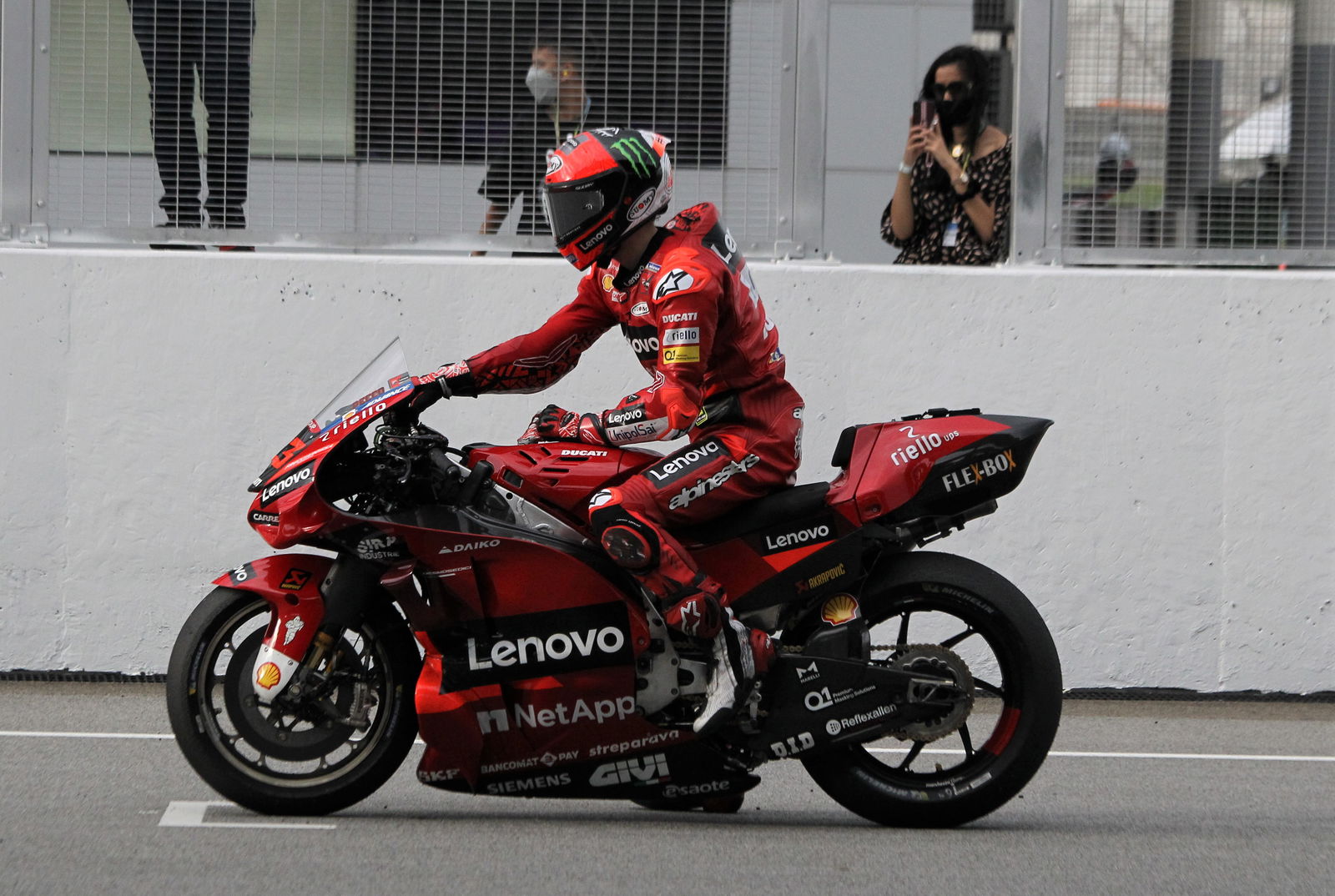
Francesco Bagnaia activates the Ducati holeshot device...
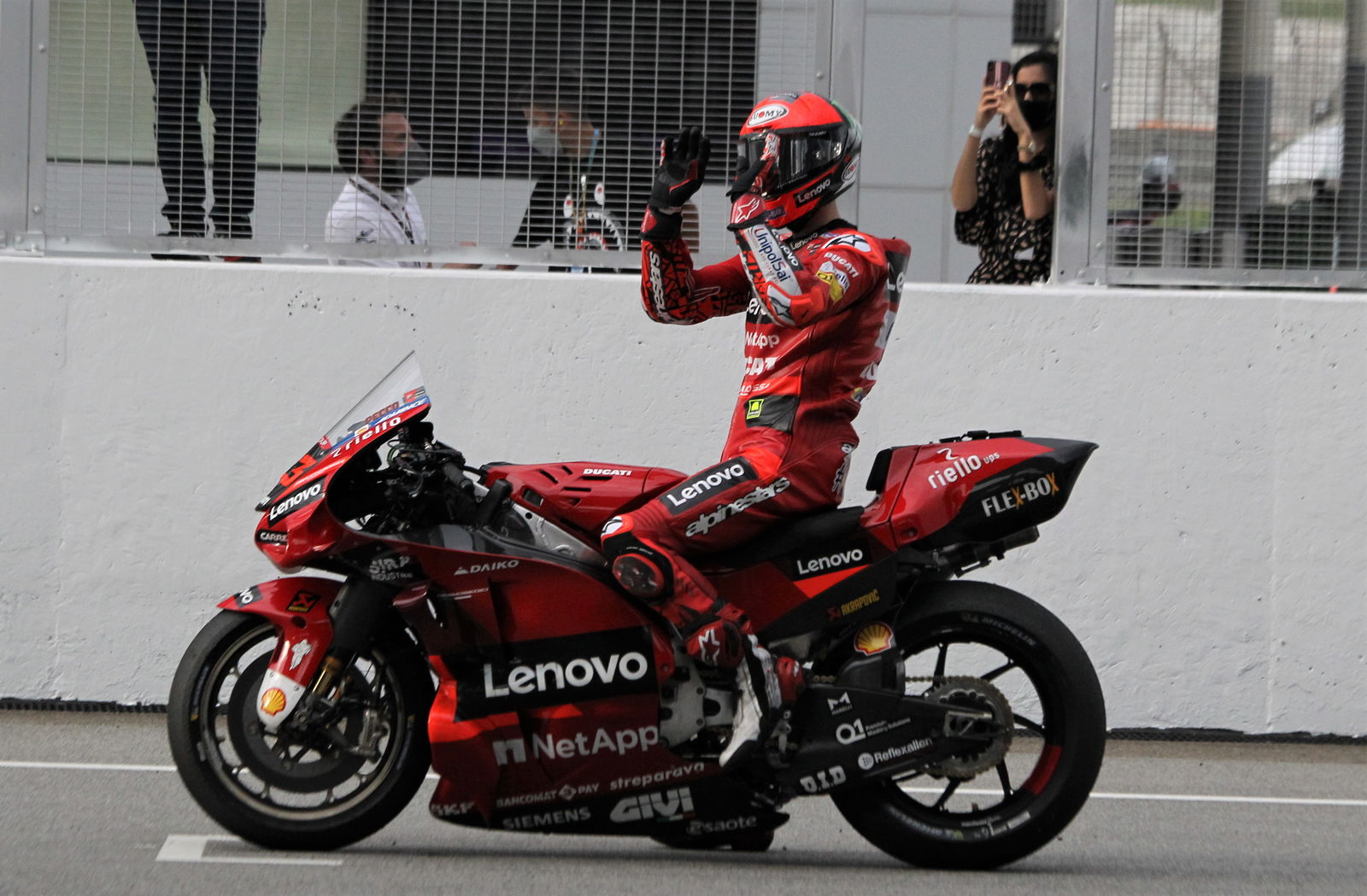
...Waves to the fans...
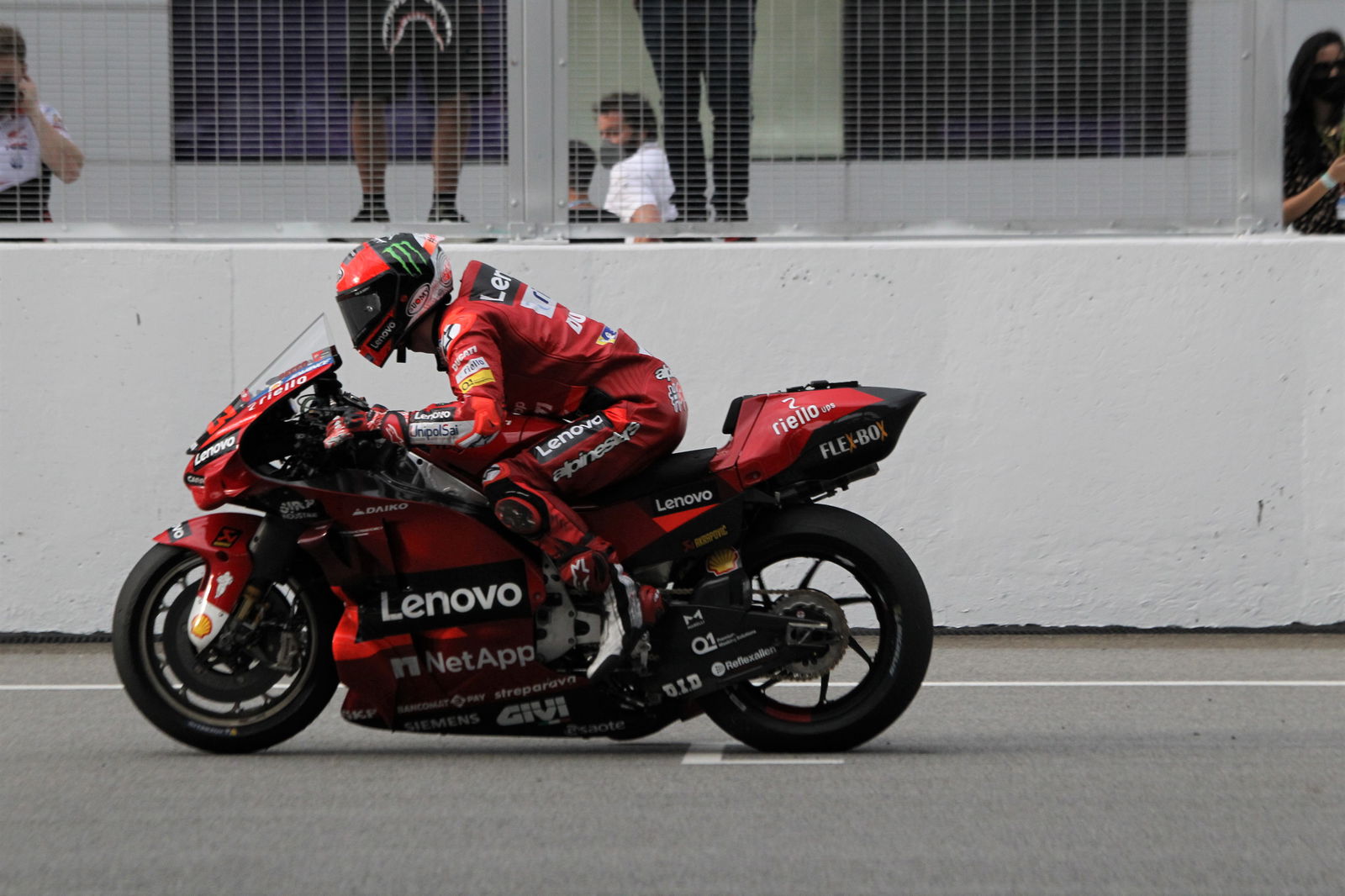
...and he's off.
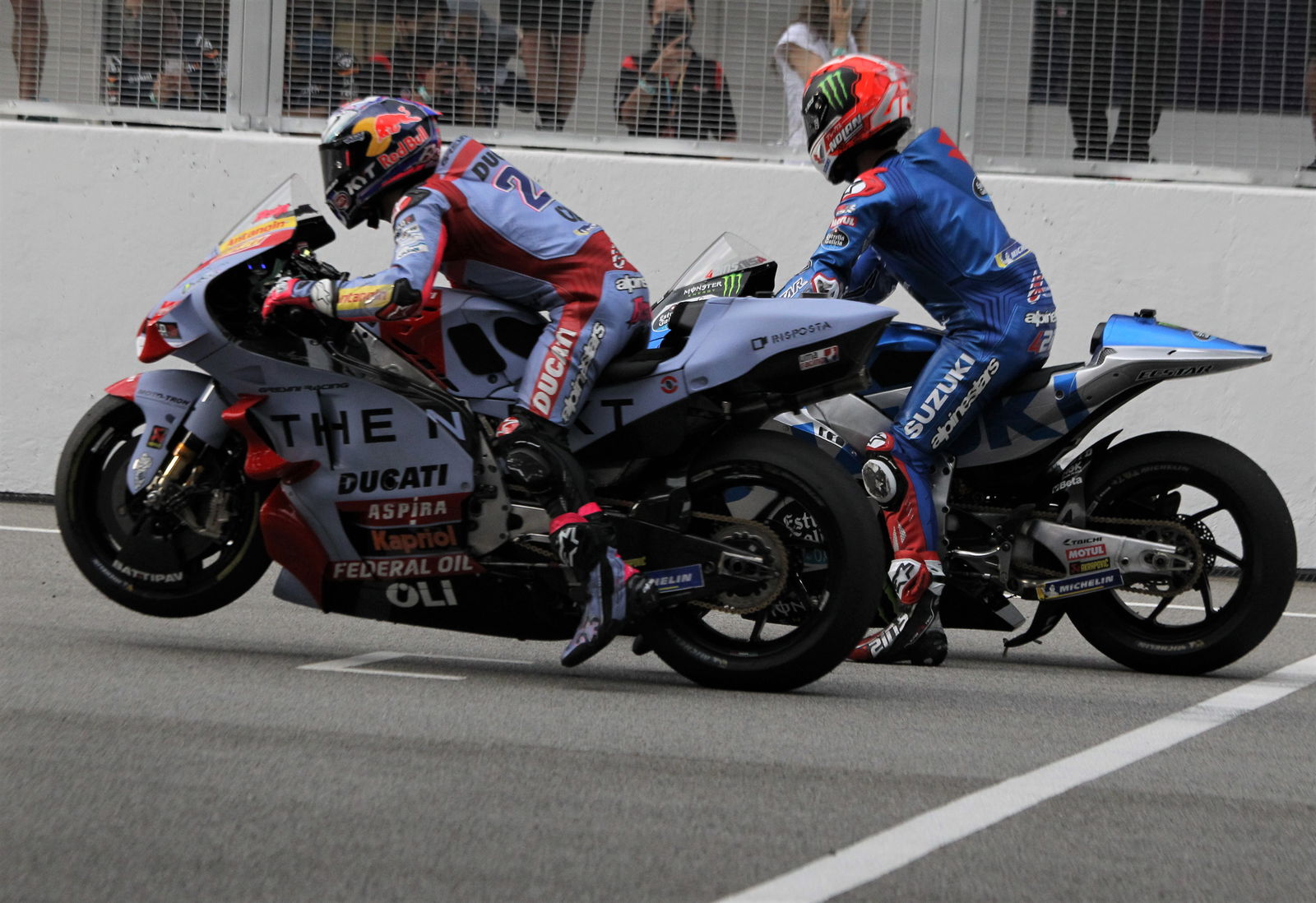
Enea Bastianini (Gresini Ducati GP21) showing that wheelies, not wheelspin, are the limit during a dry race start.
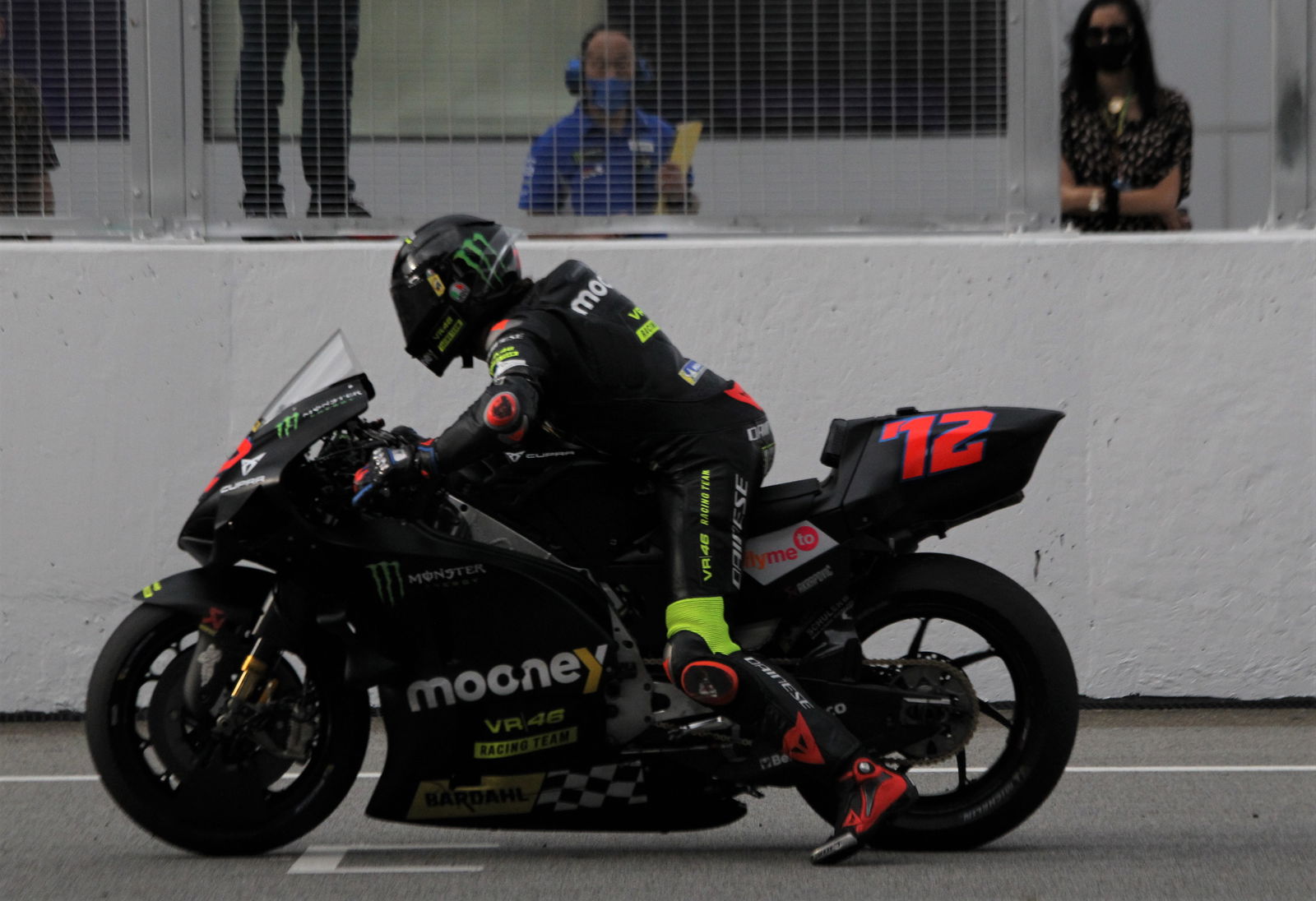
Rookie Marco Bezzecchi on the VR46 GP21 Ducati.
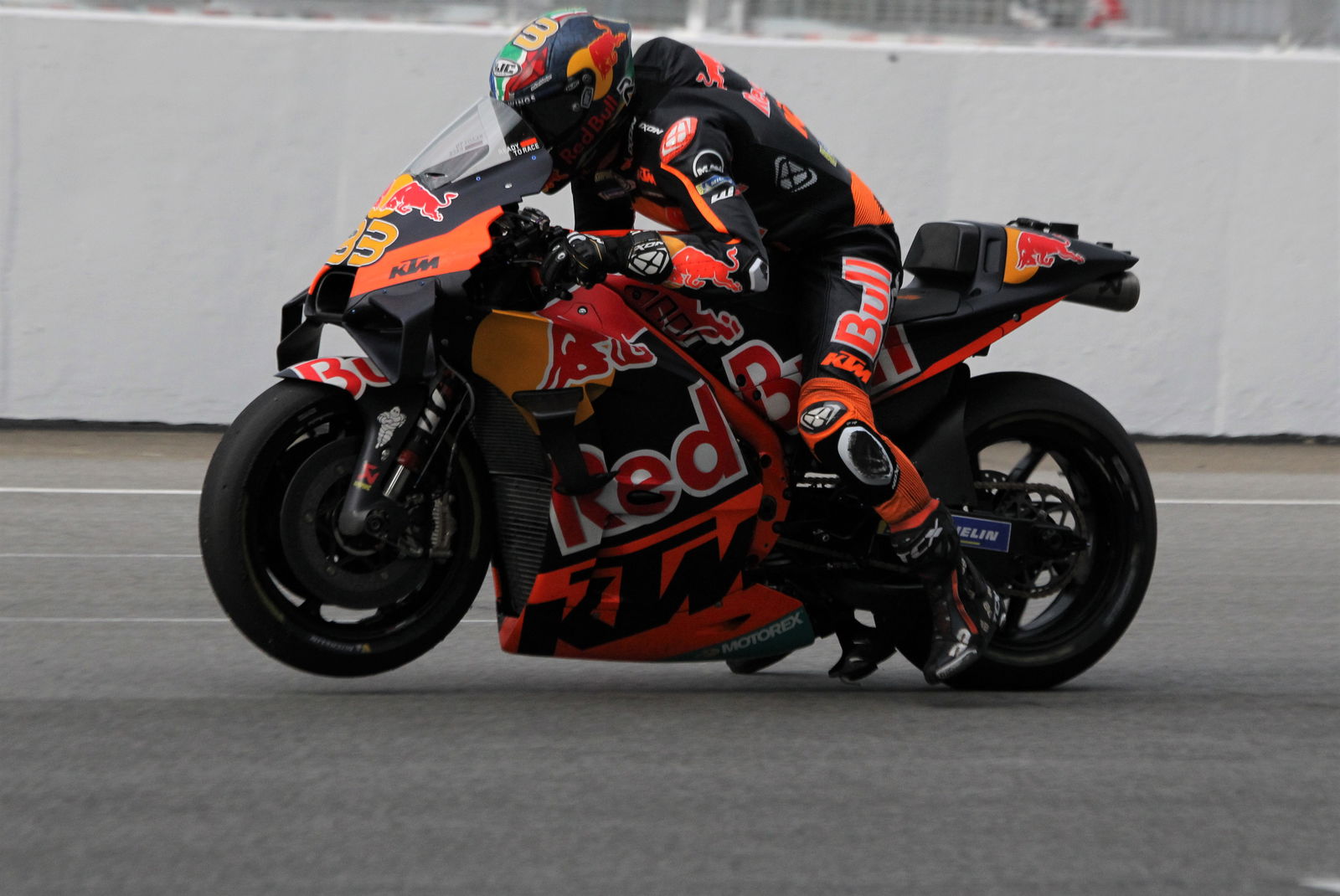
Brad Binder (Red Bull KTM).
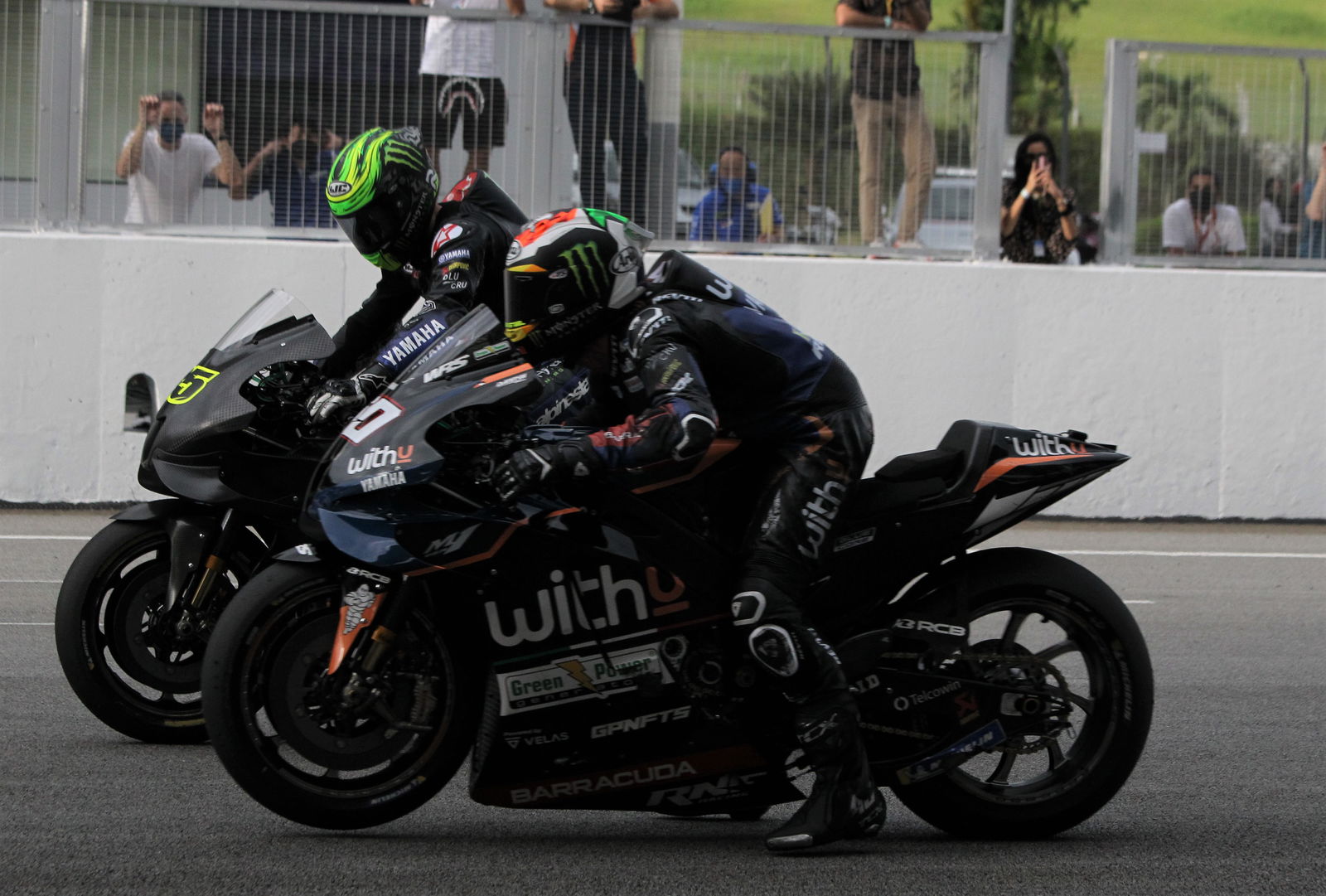
Yamaha test rider Cal Crutchlow alongside RNF Yamaha rookie Darryn Binder, on the 2021 A-spec bike.
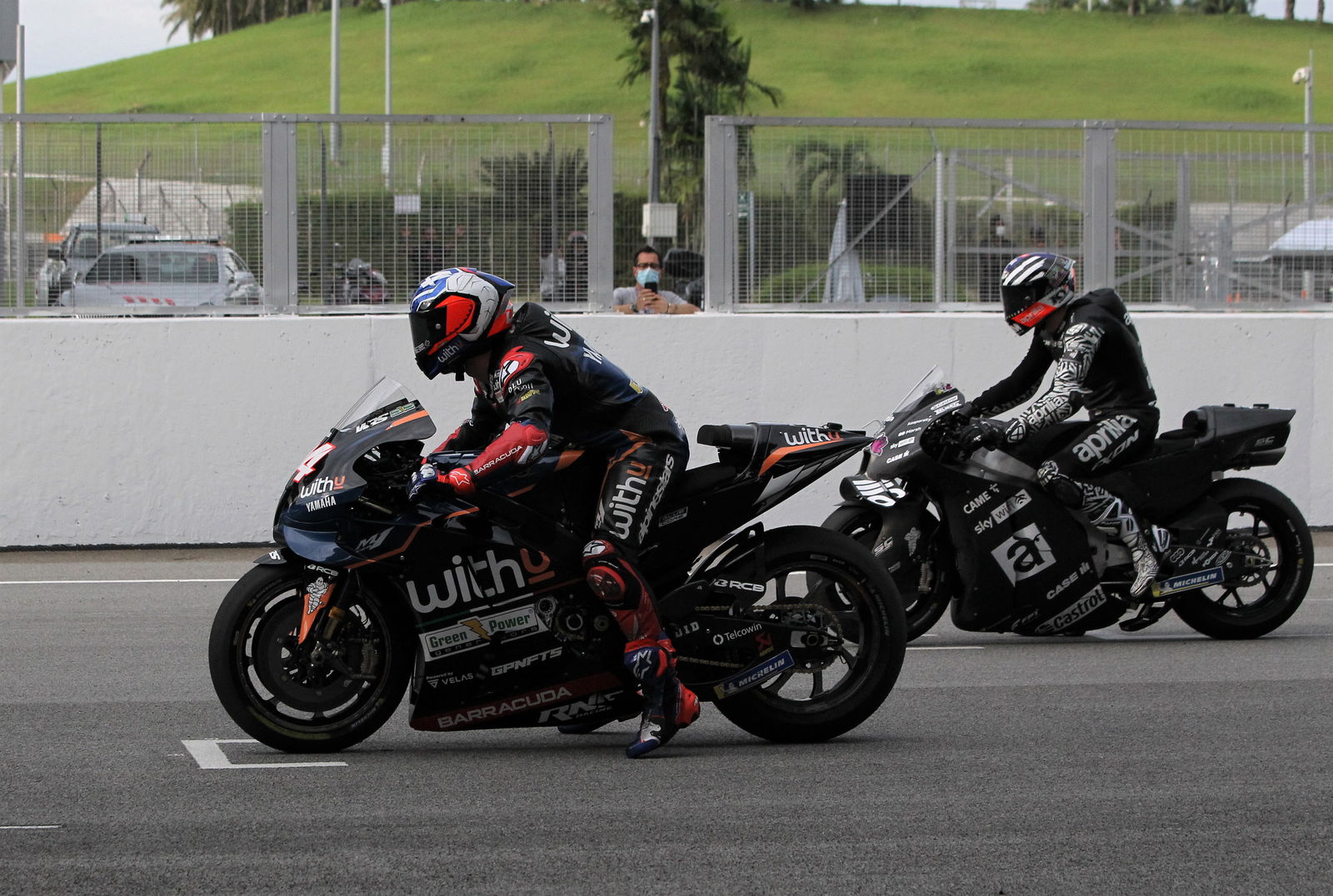
Binder's team-mate Andrea Dovizioso, on the 2022 Spec M1, and Aleix Espargaro.
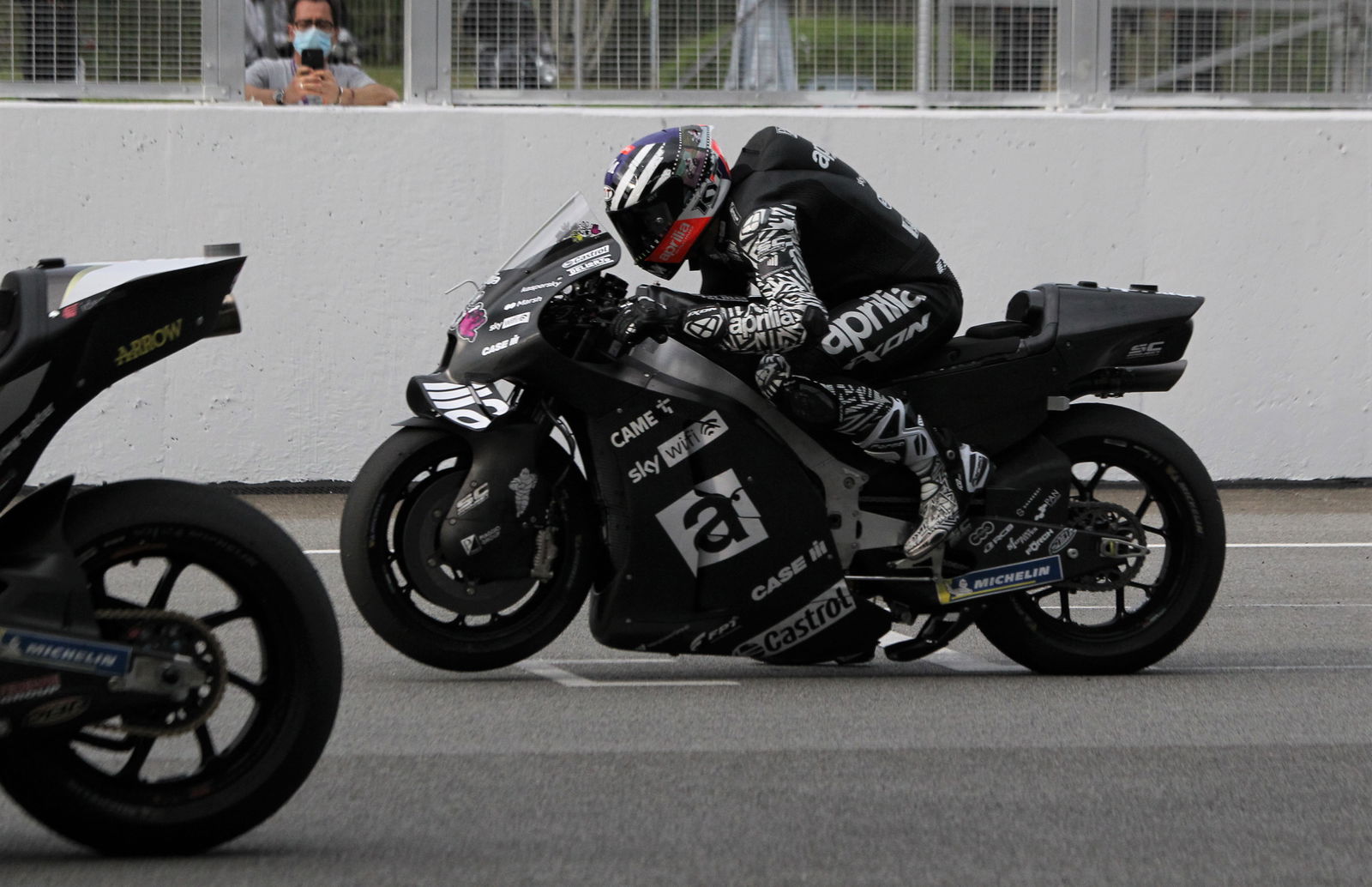
Espargaro drops the clutch and the front of his Aprilia hovers just off the ground, the point of maximum acceleraton.
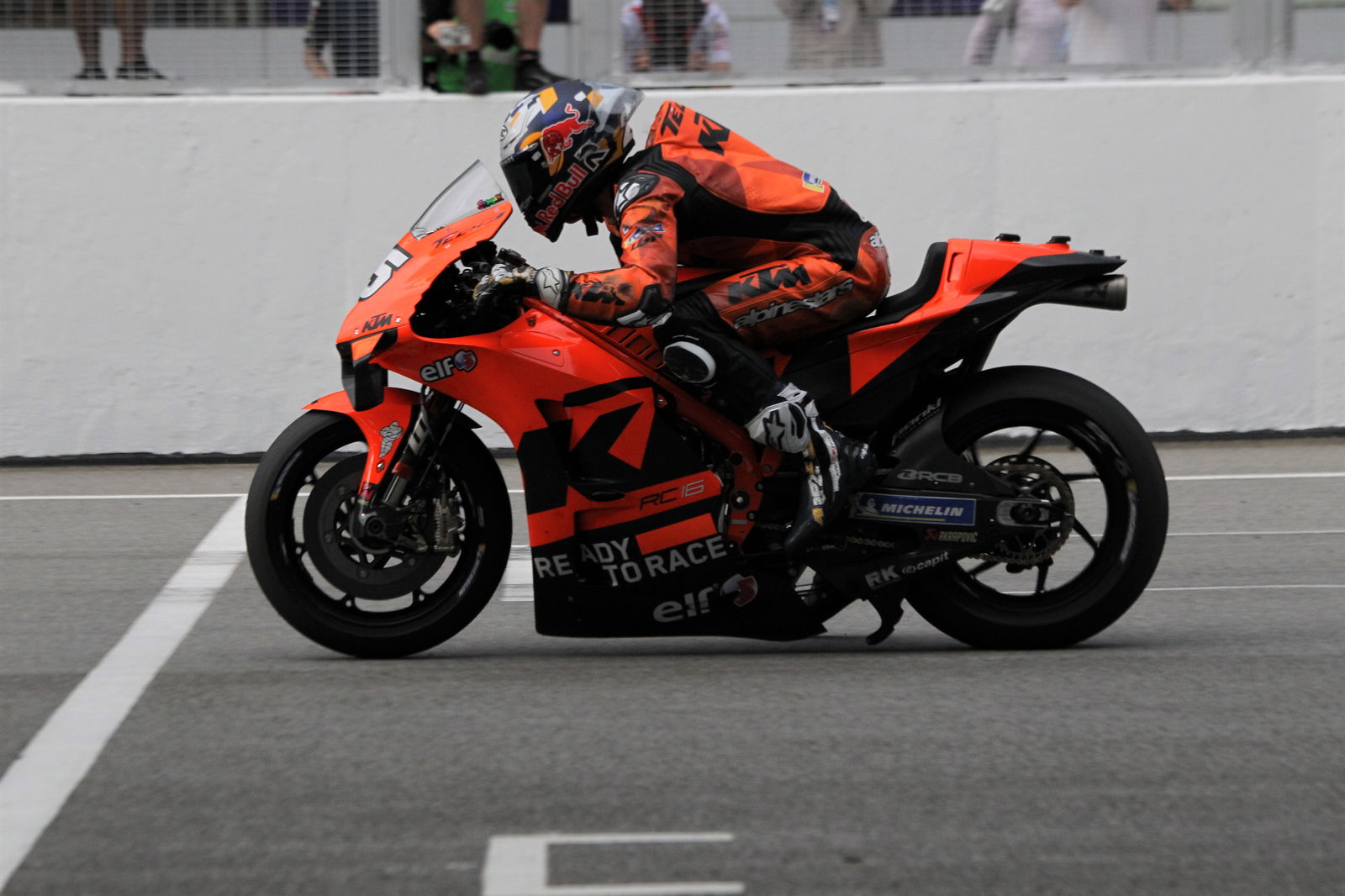
Rookie Raul Fernandez on his Tech3 KTM. Note how close the swingarm spoiler (or 'spoon') is to the ground. Some factories have now removed the swingarm attachment to avoid grounding.
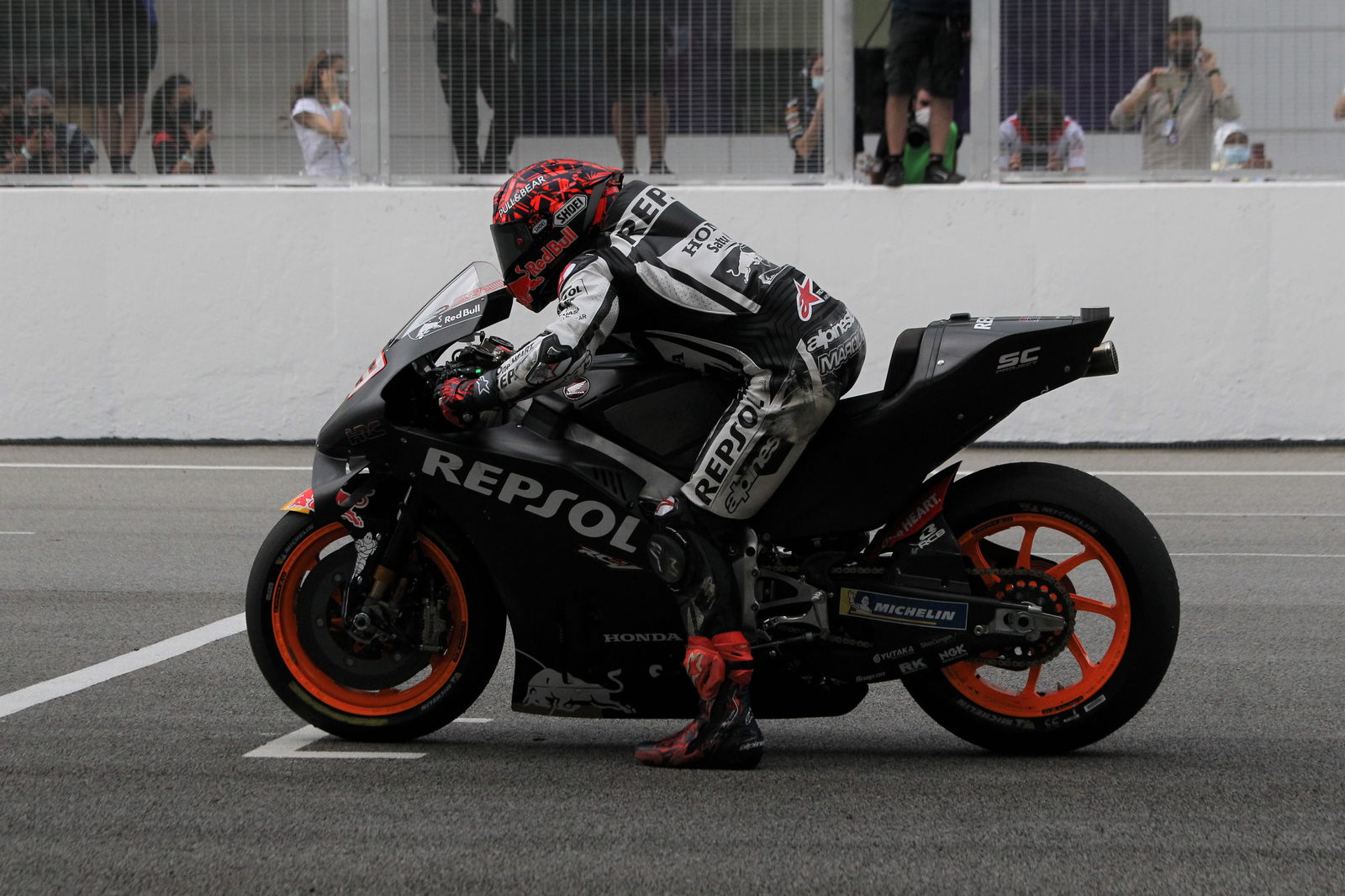
Marc Marquez on the all-new 2022 Honda. Marquez wasn't even on the grid at Qatar last season, but will he lead the field into turn one next weekend?
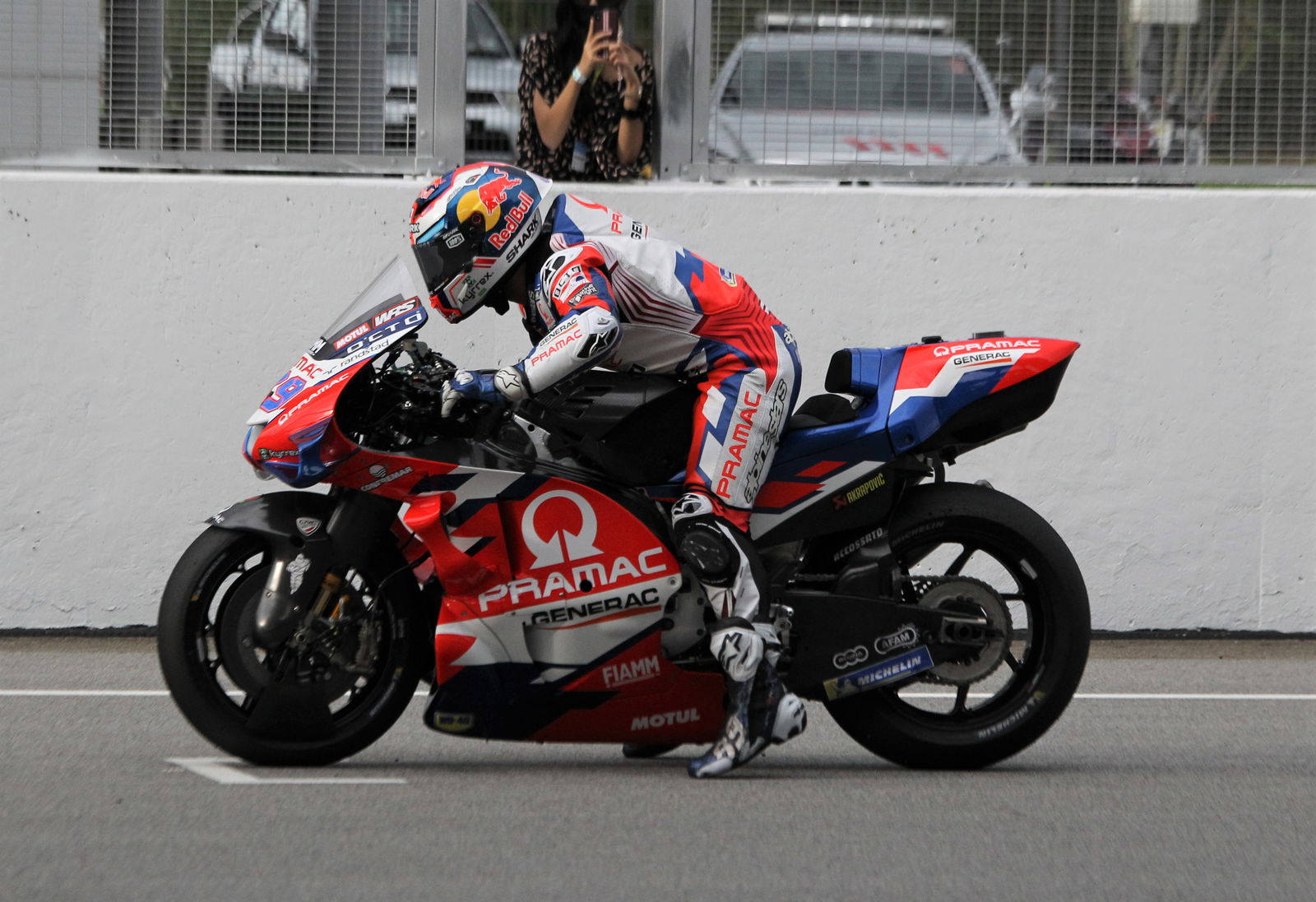
Jorge Martin made one of the most impressive starts to a MotoGP debut when he bolted from 14th to 4th at turn one in Qatar last season. Here he is practising his skills on Pramac's latest GP22.
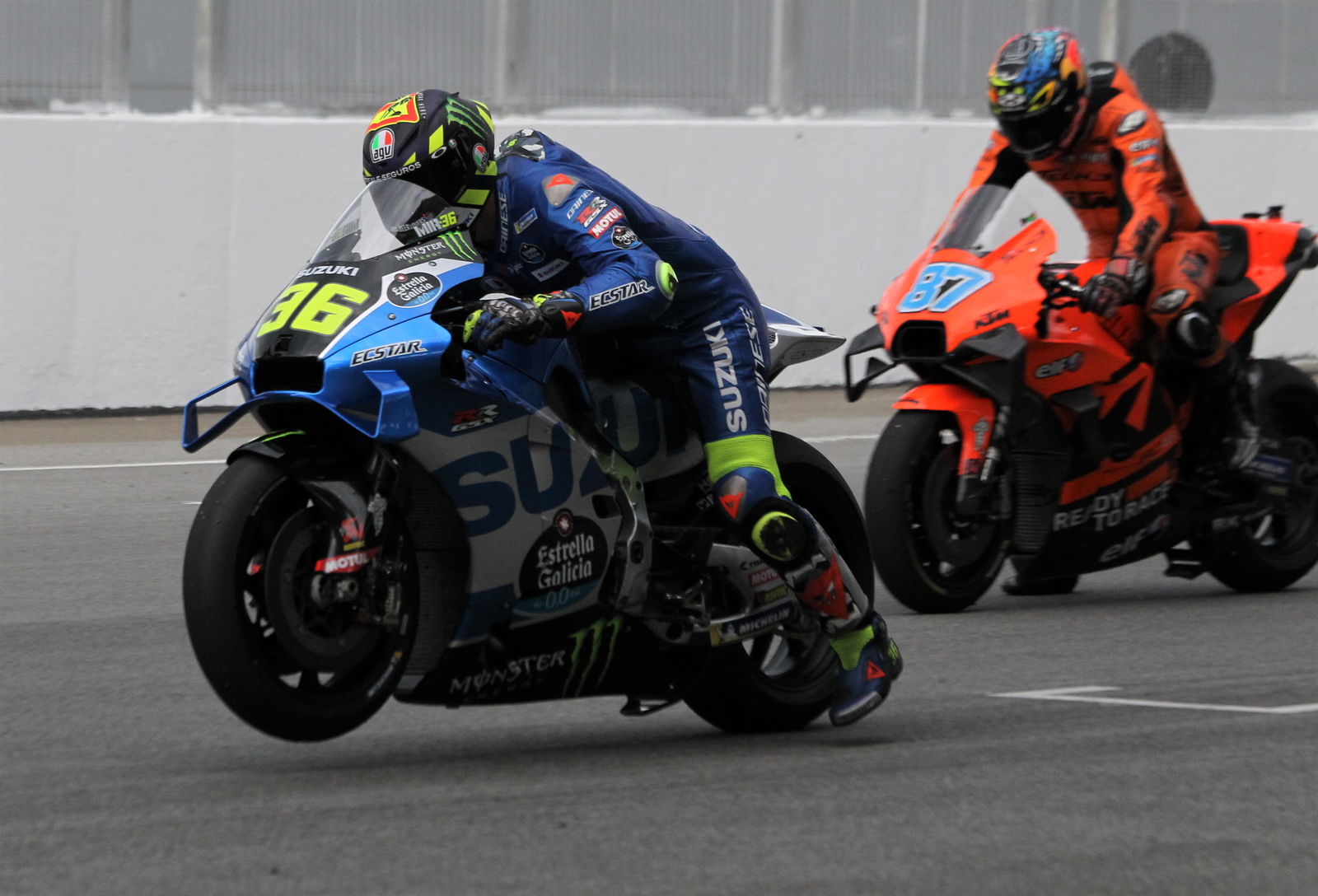
Holeshot devices help a bike to resist wheelies at the start but don't eliminate them, as illustrated here by Joan Mir (Suzuki),
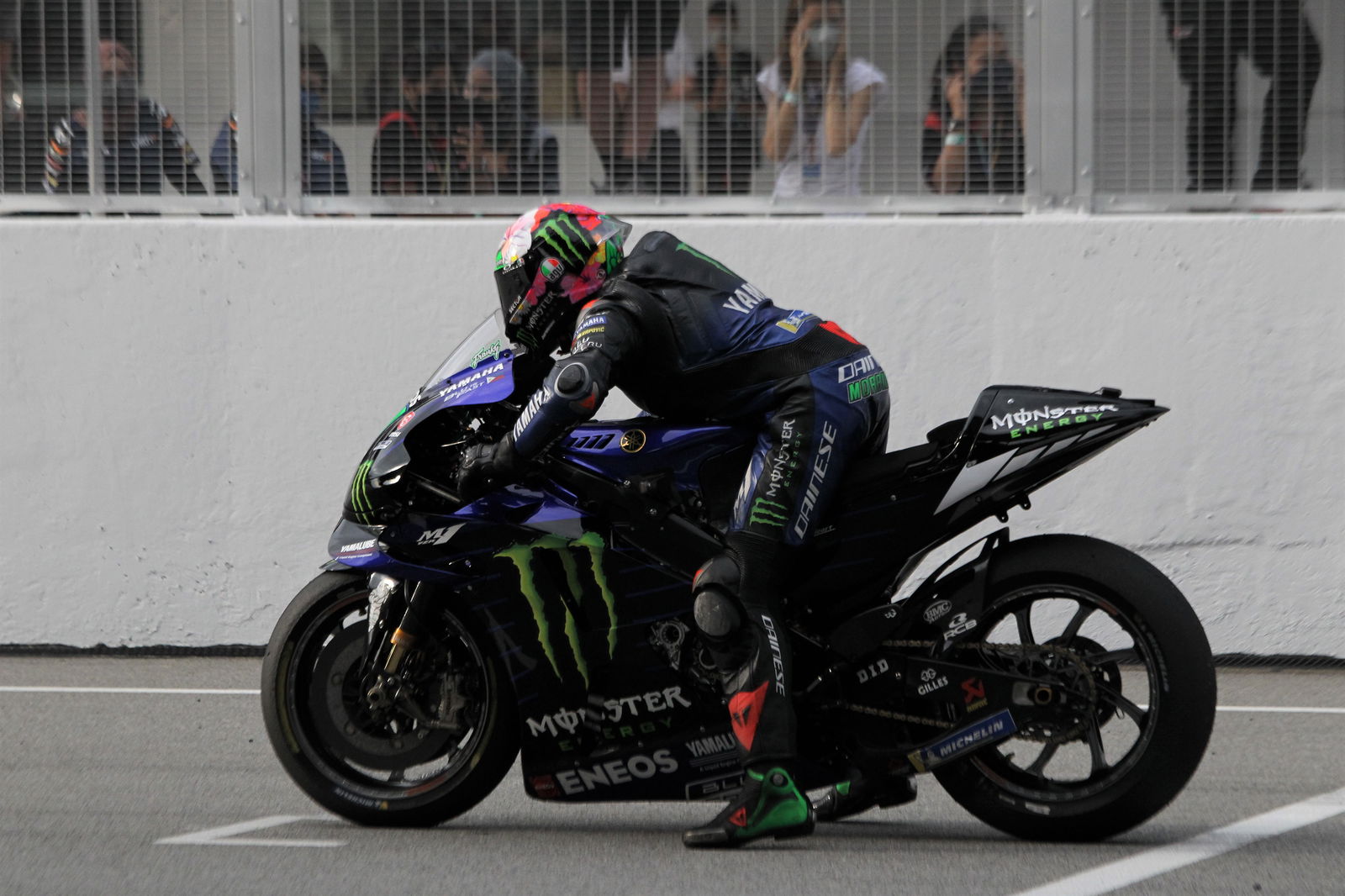
Franco Morbidelli was a two-year-old Yamaha, in Petronas colours, for Qatar last season. He'll return riding the lastest factory machine at Monster Yamaha.
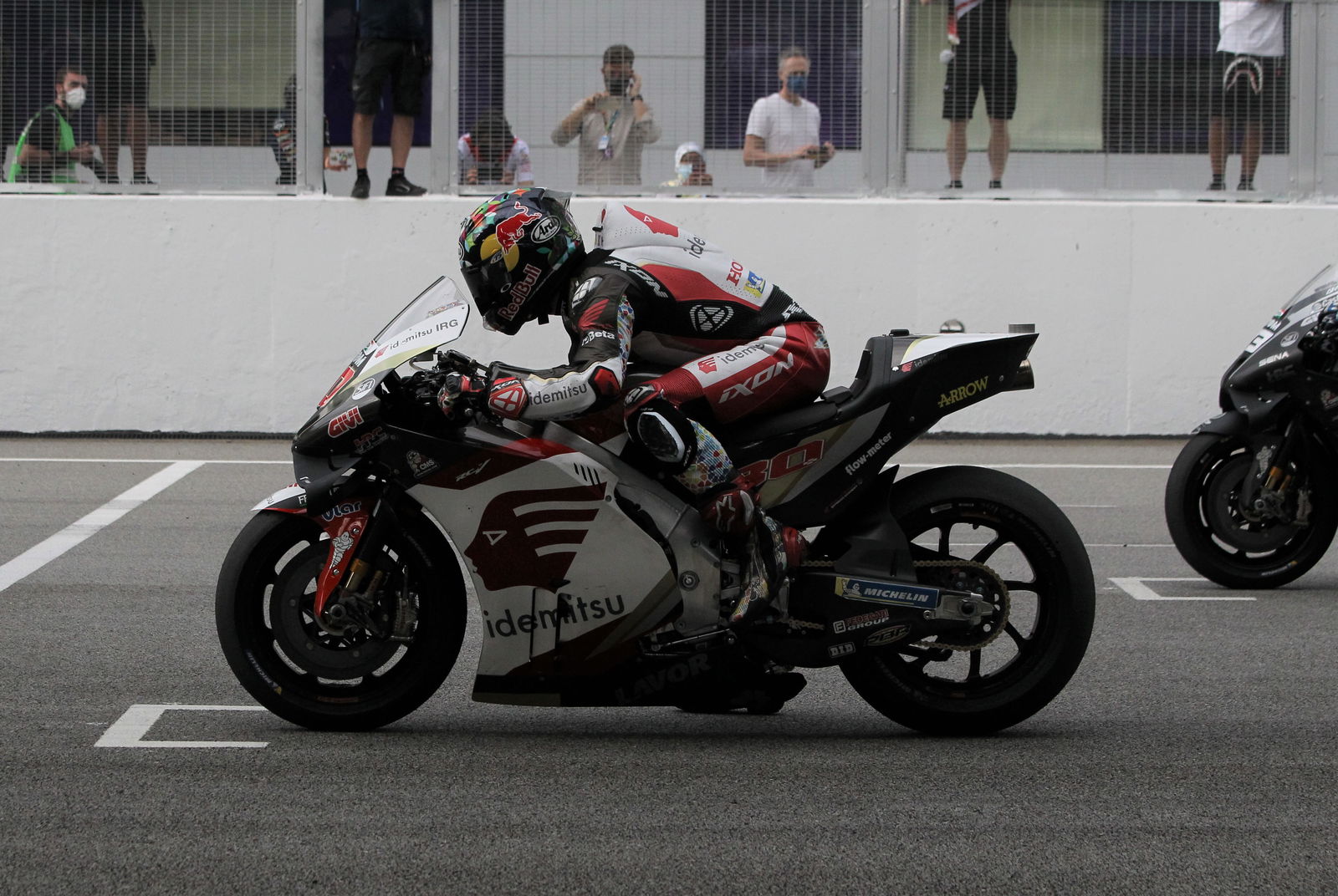
The LCR team of Takaaki Nakagami and Alex Marquez also have the radically revised 2022-spec RC213V.
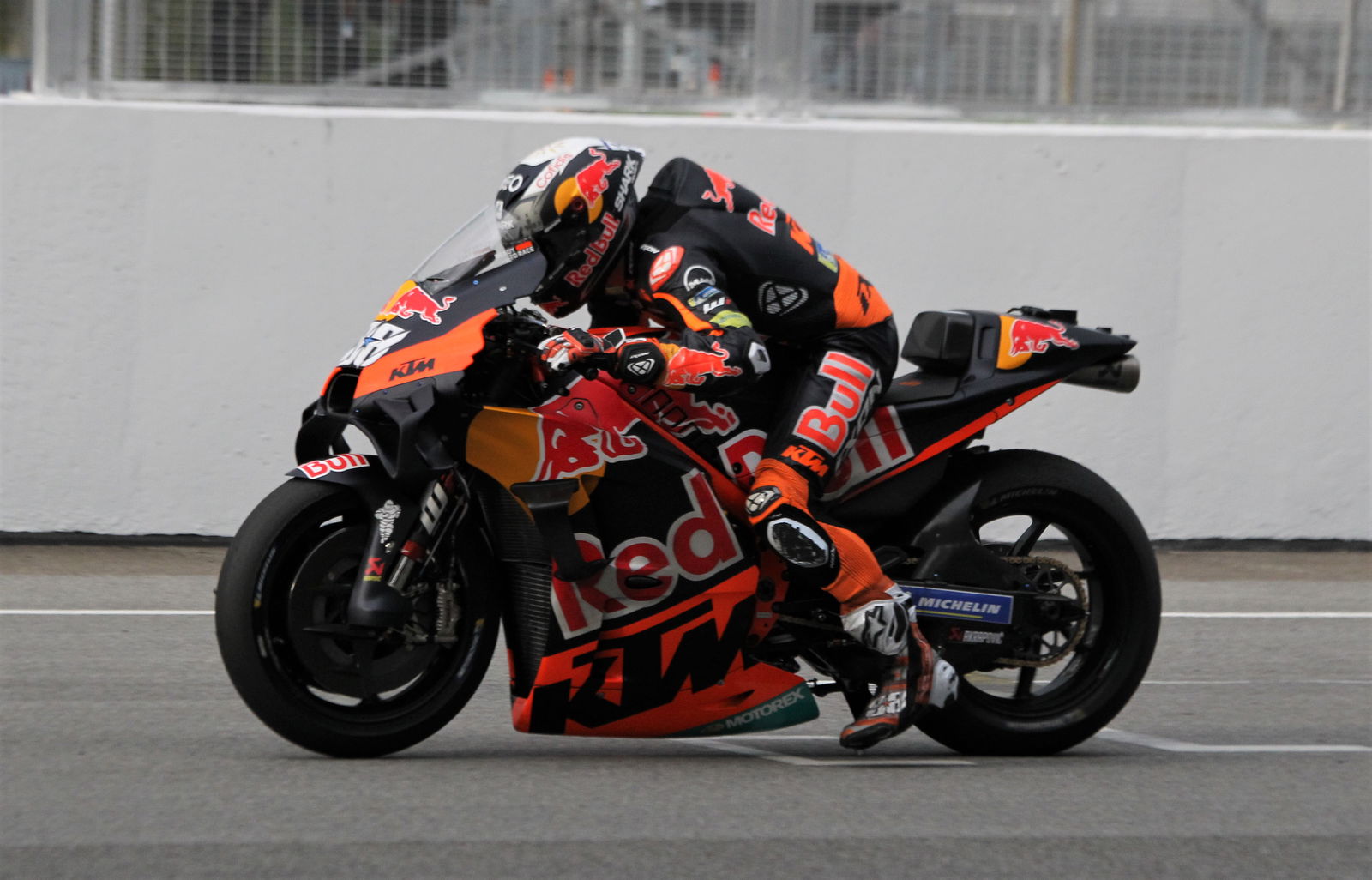
KTM, seen here with Miguel Oliveira, have made smaller changes to their bike for 2022.
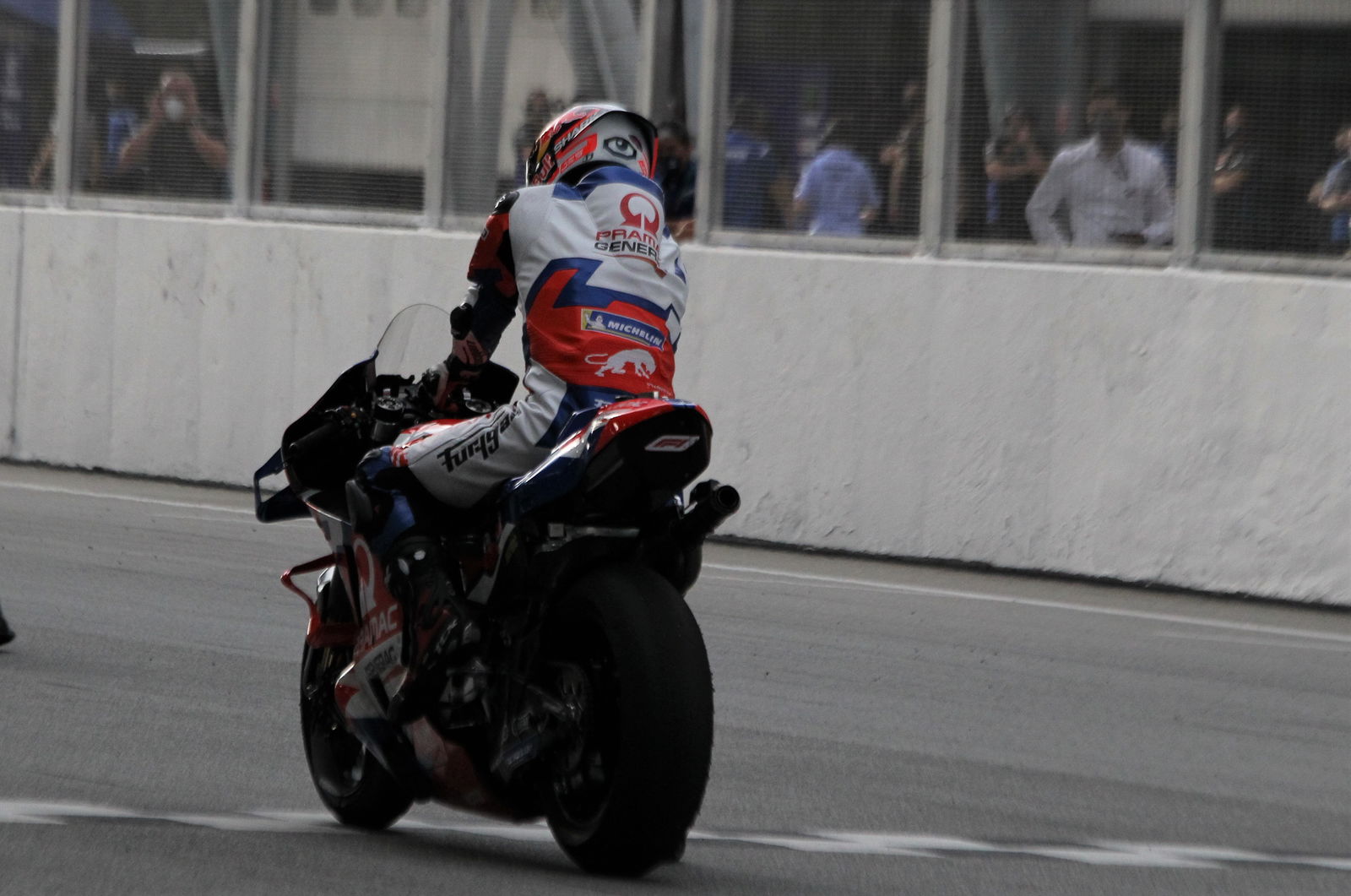
Pramac's Johann Zarco has been developing Ducati's new front ride-height system, operated by a handlebar switch on corner entry. Here the Frenchman uses his left hand to select the holeshot device, which also now lowers the front and rear at the same time.
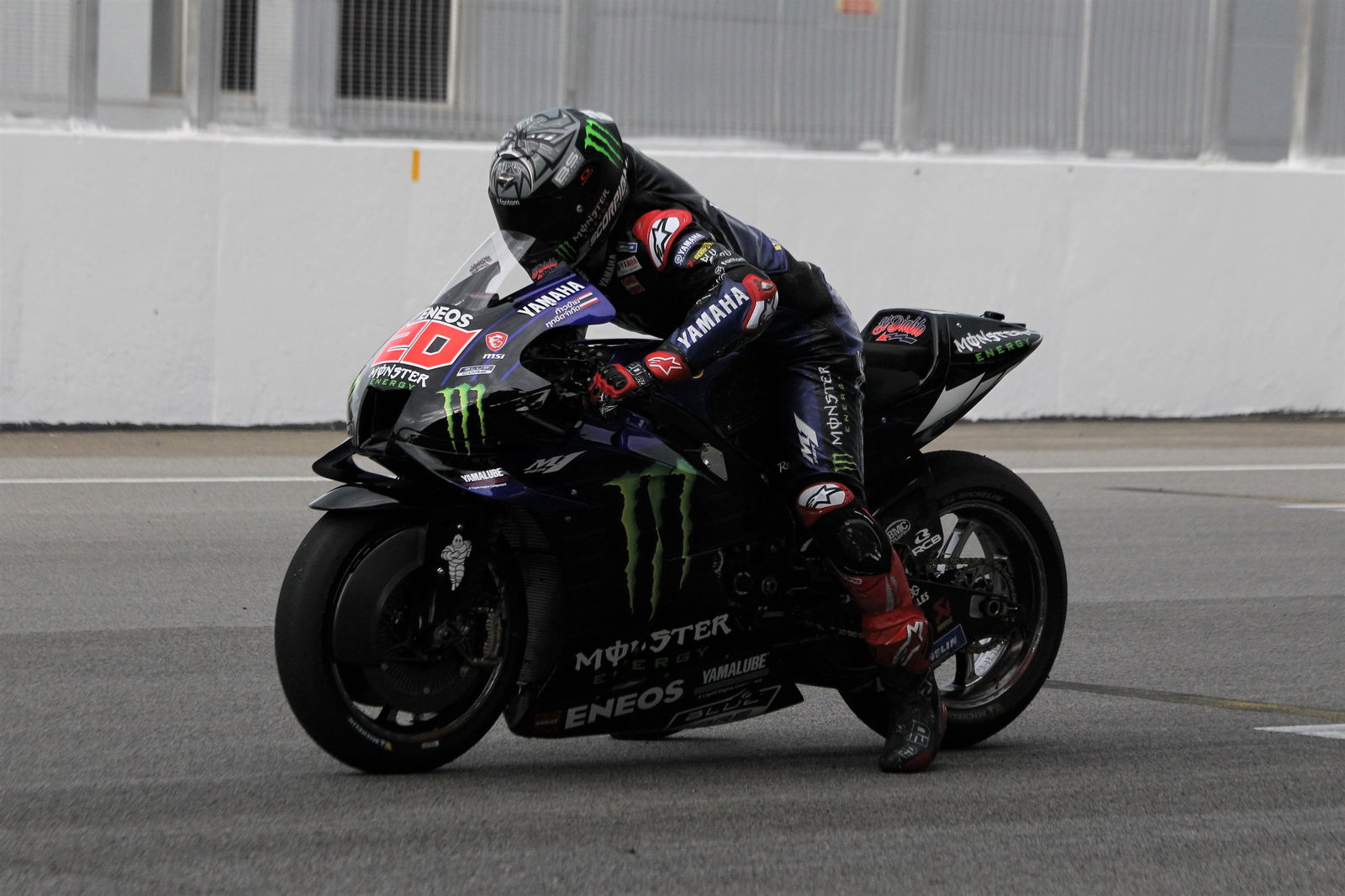
Yamaha was without a front holeshot device at Qatar last year but still won both races with Maverick Vinales and Fabio Quartararo. The Frenchman returns as reigning world champion and with the M1 able to lower at the front and rear for race starts since the early European rounds of last season.
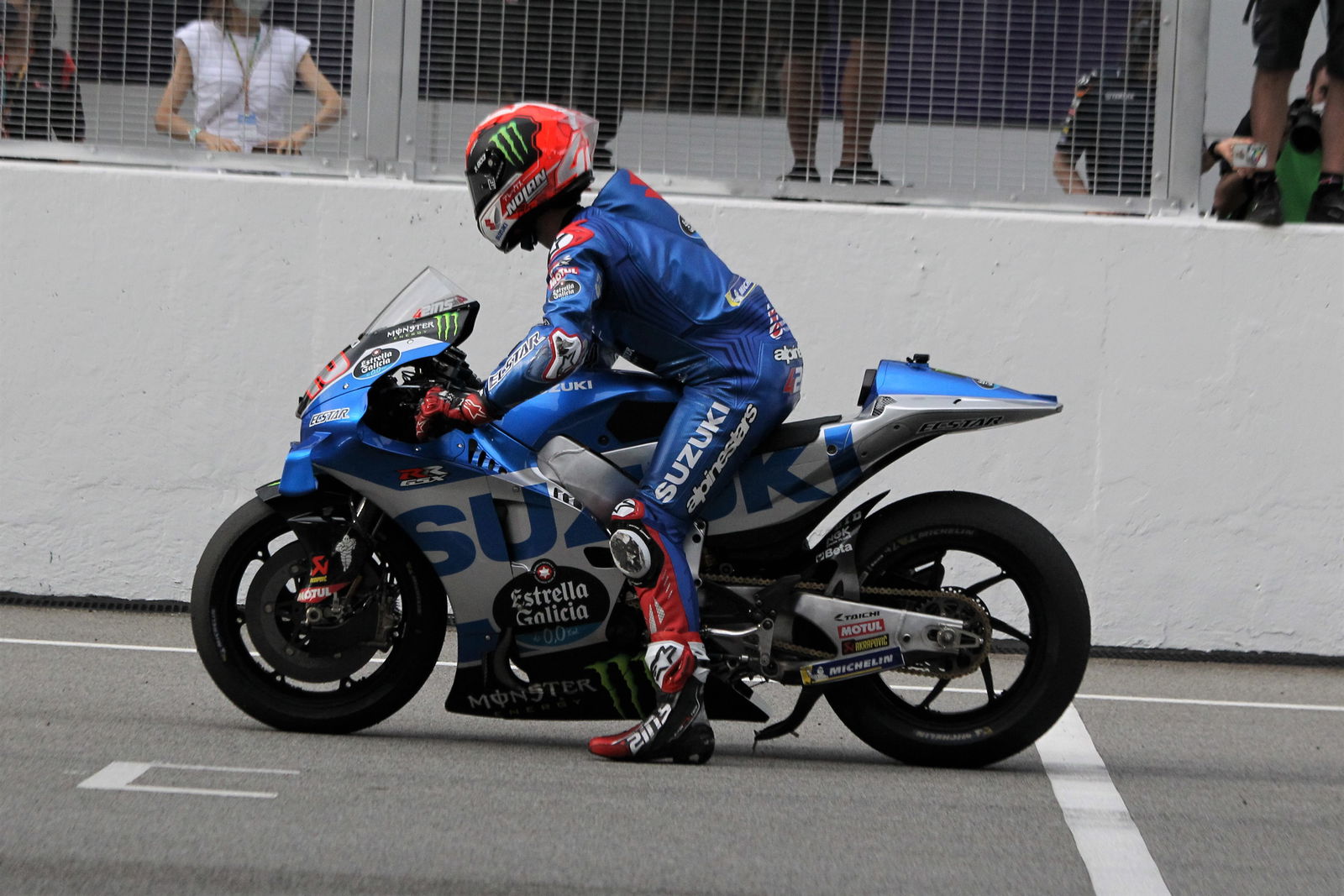
Alex Rins (Suzuki).
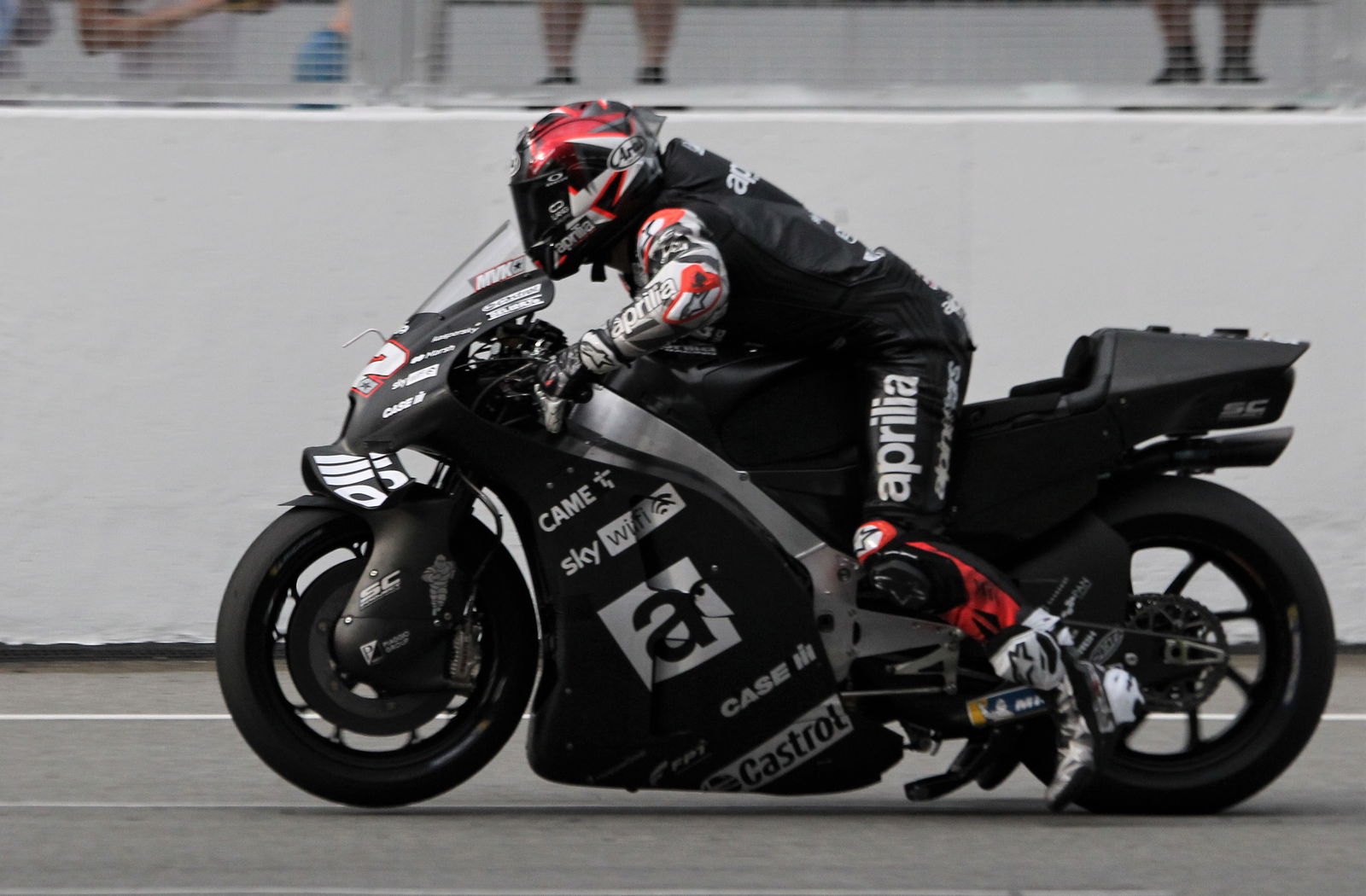
Maverick Vinales on the impressive new RS-GP. The Aprilia holeshot system looks to be one of the best in terms of how much it lowers the bike, a challenger for even Ducati.
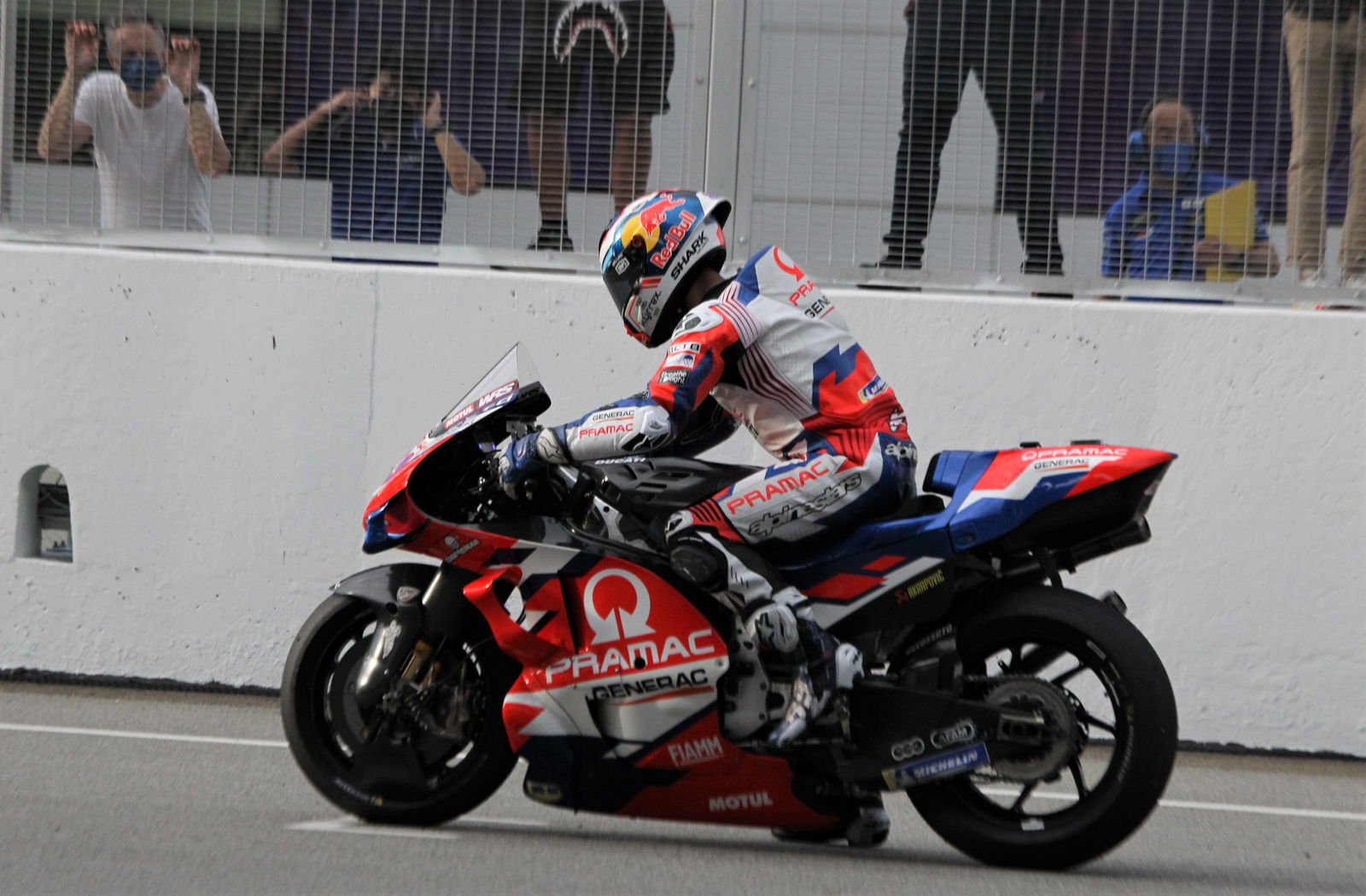
For comparison, Johann Zarco on the Pramac GP22.
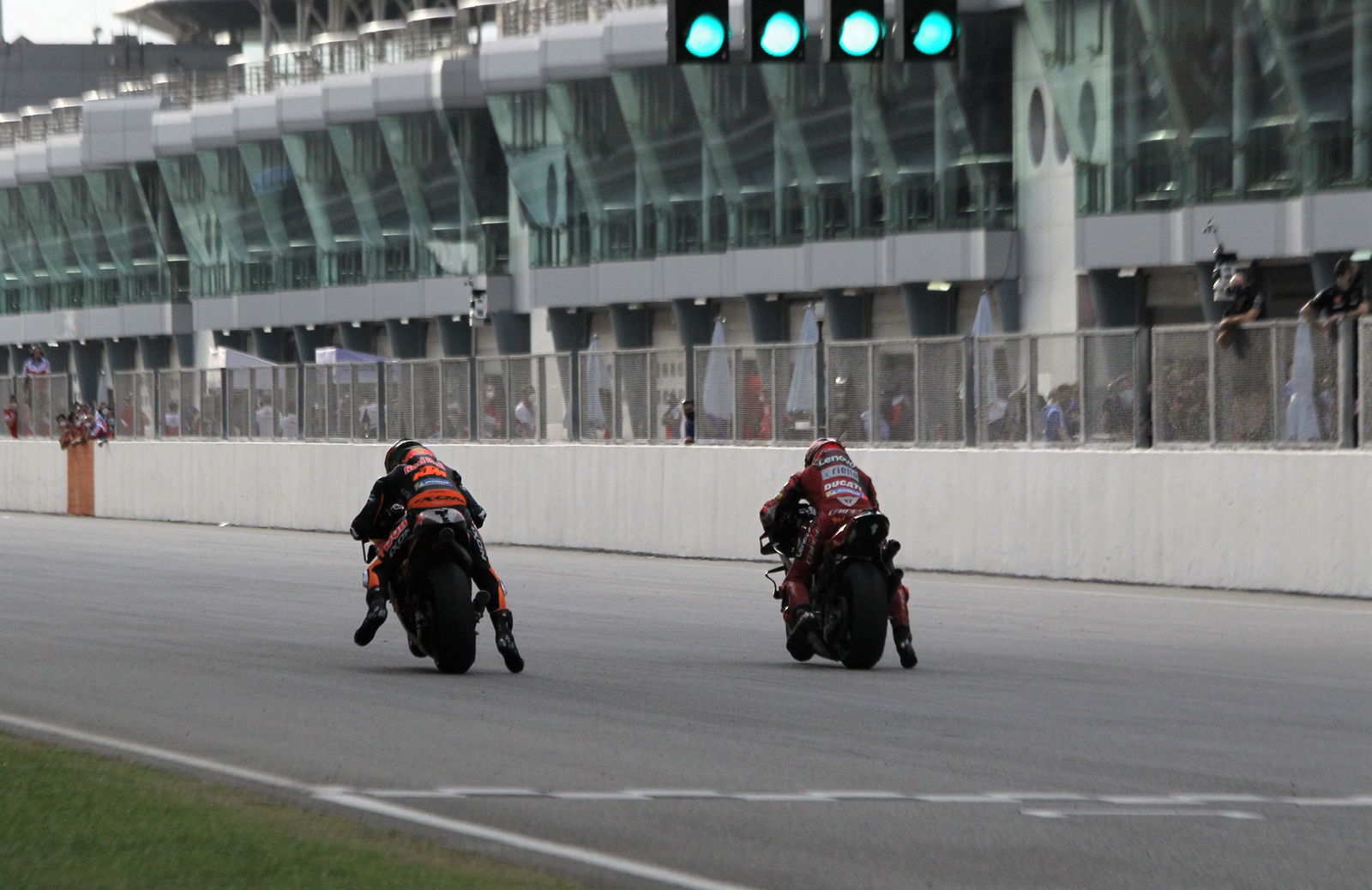
KTM vs Ducati drag race. The real thing takes place in Qatar next Sunday (March 6).
